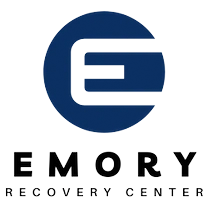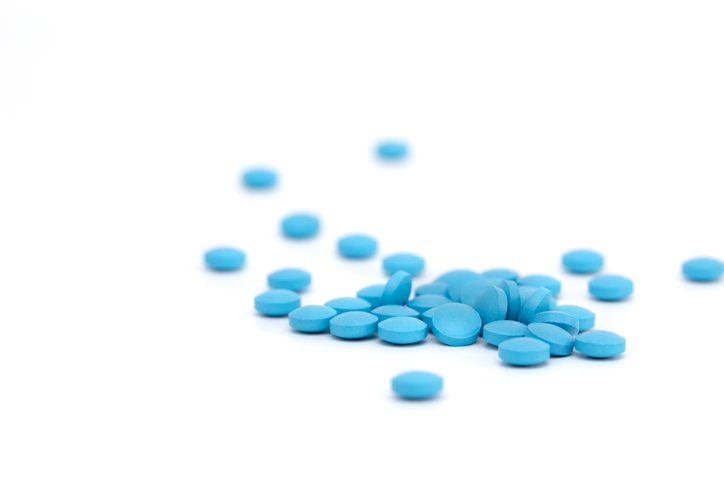In recent years, the escalating crisis of opioid addiction has cast a spotlight on a particularly insidious category of substances commonly referred to as ‘blues’. These drugs, often prescription opioids like oxycodone, are deceptively dangerous – their medical legitimacy masks a high potential for abuse and addiction.
This article delves into the murky waters of blues drugs – exploring what they are, how they ensnare individuals into the depths of dependency, the perilous risk of overdose, and, crucially, the pathways to recovery and treatment. As we navigate through the complexities of blues drugs addiction, we aim to shed light on both the stark realities of this crisis and the beacon of hope that treatment and recovery offer.
What is Blues Drugs?
“Blues” is a slang term that typically refers to prescription opioid pills, particularly those that are blue in color. One of the most common examples of this is oxycodone, often found in 30 mg pills which are blue. Oxycodone is a powerful opioid pain medication that can be highly addictive and is often misused.
It’s important to note that using prescription drugs without a prescription, or in a way that hasn’t been recommended by a healthcare provider, is illegal and can be extremely dangerous. Misuse of opioids like oxycodone can lead to addiction, overdose, and even death, especially when combined with other substances like alcohol or benzodiazepines.
How Are Blues Drugs Used?
“Blues,” a slang term often referring to blue-colored opioid pills such as oxycodone, can be used in various ways, many of which are highly risky and illegal without a prescription. Here’s an overview of the common methods of use:
- Oral Ingestion: This is the intended route of administration for prescription opioids. The user swallows the pill, which then passes through the digestive system before entering the bloodstream.
- Crushing and Snorting: Some individuals crush these pills into a powder to snort them. This method delivers the drug more quickly to the bloodstream through the nasal tissues, leading to a faster and more intense effect.
- Smoking: Some people smoke the crushed pill, which also leads to rapid absorption into the bloodstream through the lungs.
- Injection: In some cases, individuals dissolve the crushed pills in water and inject the solution intravenously. This is the most dangerous method of use, as it can lead to a rapid and intense high, significantly increasing the risk of overdose and infections, including HIV and hepatitis from needle sharing.
It’s crucial to understand that any non-prescribed or recreational use of opioids like “blues” is not only illegal but also extremely hazardous. These methods of misuse alter the intended release and absorption mechanism of the drug, leading to a higher risk of overdose, dependence, and long-term health issues. The use of such drugs should always be under the guidance and prescription of a healthcare professional. If there’s a concern about misuse or addiction, contact us today by calling (508) 286-8177.
Counterfeit Blues and Other Known Street Names
The clandestine world of opioid misuse is not just limited to legitimately prescribed medications; a significant and dangerous part of it involves counterfeit pills, often misleadingly sold as “blues.” These counterfeit versions, frequently found on the street, are masquerading as well-known prescription opioids like oxycodone but come with heightened risks.
The Dangers of Counterfeit “M30s”
One specific example is the pills known as “M30s,” a reference to the imprint on certain 30 mg oxycodone tablets. Legitimate M30s are manufactured by Mallinckrodt Pharmaceuticals and are small, round, and typically blue. However, the black market is flooded with counterfeit M30s, which can be visually similar to the genuine product. These fake pills often contain lethal substances, notably fentanyl, a synthetic opioid far more potent than heroin or morphine. The inclusion of fentanyl dramatically increases the risk of overdose, as it can be deadly in very small amounts.
Common Street Names
Street names for oxycodone and similar prescription opioids vary regionally and evolve over time. Some of the more prevalent ones include:
- Roxies/Roxys: A nickname for Roxicodone.
- Percs: Short for Percocet, a combination of oxycodone and acetaminophen.
- Hillbilly Heroin: A term highlighting the drug’s addictive potential.
- Kickers: A more general term sometimes used for opioids.
- Oxy, OCs: Specifically referring to OxyContin, an extended-release form of oxycodone.
The street names and the presence of counterfeit versions like “M30s” underscore the hidden dangers in illicit opioid use. These drugs’ unregulated nature means users often consume them without knowing their true composition, potency, or risk. This uncertainty significantly elevates the likelihood of adverse reactions, including fatal overdoses.
Can You Get Addicted to Blues Drugs?
Yes, you can become addicted to “blues” drugs. Opioids have a high potential for addiction due to their powerful effects on the brain’s reward system. Here’s how the addiction process typically works:
- Tolerance: With regular use of opioids, your body can build up a tolerance, meaning you need higher doses to achieve the same effects. This can lead to increased usage.
- Dependence: Over time, your body may become dependent on the drug to function normally. If you stop taking it, you may experience withdrawal symptoms, a clear sign of physical dependence.
- Addiction: Addiction is a chronic, relapsing disorder characterized by compulsive drug seeking, continued use despite harmful consequences, and long-lasting changes in the brain. It’s considered both a brain disorder and a mental illness.
Addiction to Blues Drugs can develop quickly, even when they are used as prescribed, although the risk increases significantly with misuse, such as taking higher doses than prescribed, using them more frequently, or using them in ways other than as intended (like snorting or injecting).
Can You Overdose on Blues Drugs?
Yes, it is possible to overdose on “blues” drugs, which typically refer to opioid medications like oxycodone. Opioid overdose is a serious and potentially life-threatening condition. Here’s how it can occur:
- Respiratory Depression: The most dangerous effect of opioid overdose is respiratory depression, where breathing becomes extremely slow and shallow, or stops altogether. This can lead to a lack of oxygen to the brain, resulting in coma, permanent brain damage, or death.
- High Potency: Opioids like oxycodone are highly potent, and taking too much can easily lead to overdose, especially in individuals with lower tolerance.
- Combining with Other Substances: The risk of overdose increases significantly when opioids are combined with other substances, especially depressants like alcohol, benzodiazepines (like Xanax or Valium), or other opioids. These combinations can lead to more profound respiratory depression.
- Variable Tolerance: Tolerance levels can change, particularly if someone has stopped using the drug for a while and then relapses. They might mistakenly take the same dose they used previously, which could now be too high for their reduced tolerance.
- Unknown Composition: If the drug is obtained illegally, there’s no way to be certain about its purity or composition. It might be more potent than expected or could be mixed with other dangerous substances, like fentanyl, which is extremely potent and increases the risk of overdose.
Signs of an opioid overdose include:
- Extremely pale and/or clammy skin
- Limp body
- Blue or purple fingernails and lips
- Vomiting or gurgling noises
- Inability to speak or be awakened
- Slow or stopped breathing
- Slow or stopped heartbeat
If an opioid overdose is suspected, it’s critical to call emergency services at 911 immediately. Administering naloxone (Narcan), a medication that can rapidly reverse the effects of an opioid overdose, can be life-saving if given in time. After an overdose, it’s also important for the individual to seek professional help for substance use disorder by calling us at (508) 286-8177.
Getting Treatment for Blues Drugs Addiction
Seeking treatment for addiction to “blues” drugs, which often refer to opioid medications like oxycodone, is a critical step towards recovery. Treatment for opioid addiction is multi-faceted and can include various components:
- Medical Detoxification: The first step in treating opioid addiction is often detoxification, where the drug is safely cleared from the body. This process should be medically supervised to manage withdrawal symptoms, which can be severe and uncomfortable.
- Medication-Assisted Treatment (MAT): MAT involves the use of medications, in combination with counseling and behavioral therapies, to provide a holistic approach to treating substance use disorders. Common medications used in treating opioid addiction include methadone, buprenorphine, and naltrexone. These medications can help reduce cravings and withdrawal symptoms.
- Counseling and Behavioral Therapies: Various forms of therapy can be effective in treating opioid addiction. This includes individual counseling, group therapy, cognitive-behavioral therapy (CBT), and motivational interviewing. These therapies can help address the underlying causes of addiction and develop coping strategies.
- Support Groups: Participation in support groups like Narcotics Anonymous (NA) or other community support groups can provide ongoing peer support and accountability.
- Inpatient or Outpatient Treatment Programs: Inpatient treatment programs involve living at a treatment facility while receiving intensive therapy and support. Outpatient programs allow individuals to live at home while attending treatment sessions at a facility.
- Aftercare and Relapse Prevention: Ongoing support is crucial for maintaining sobriety. Aftercare can include continued therapy, support groups, and possibly continued MAT. Relapse prevention strategies are an essential part of aftercare, helping individuals recognize and manage triggers.
- Lifestyle Changes: Recovery often involves making significant lifestyle changes, such as developing a stable routine, engaging in healthy activities, and building a supportive social network.
It’s important to remember that recovery is a personal journey and can be different for everyone. Treatment should be tailored to the individual’s needs. If you or someone you know is struggling with an addiction to opioids, it’s important to seek help right away by calling us at (508) 286-8177. We can provide a comprehensive assessment and create a treatment plan suited to the individual’s specific needs.




